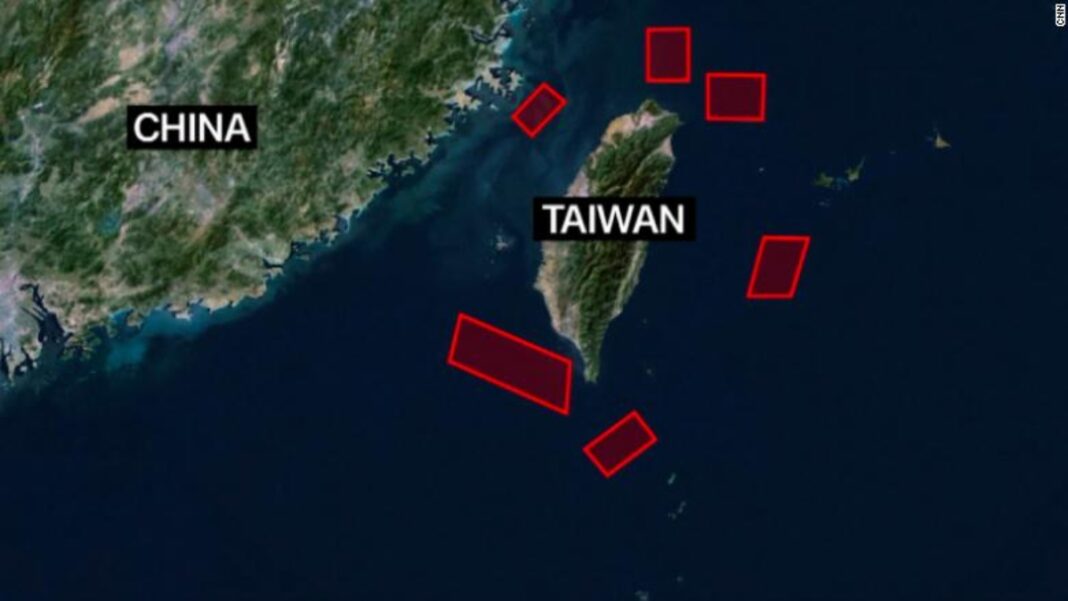Published on: August 15, 2022

TAIWAN TENSIONS
TAIWAN TENSIONS

In News:
- The visit by US speaker Nancy Pelosi to Taiwan is not being well received by China. It has sparked intense tensions between the two powerful countries – China and US as China sees Taiwan as a breakaway province.
- Taiwan, which considers itself a sovereign nation, has long been claimed by China, who considers Taiwan to be its breakaway province.
- Yet Taiwan also counts the US as its biggest ally, and Washington has a law that requires it to assist Taiwan in defending itself.
Why are US-China Loggerheads over Taiwan?
- Taiwan, officially the Republic of China, is a country in East Asia, and is the largest land mass between Japan and the Philippines at the junction of the East and South China Sea in the northwestern Pacific Ocean.
- Much of the world’s global supply chain of semiconductors is reliant on Taiwan.
- Further, its contract manufacturers together accounted for more than 60% of total global semiconductor revenue in 2021.
- Currently, only 13 countries (plus the Vatican) recognise Taiwan as a sovereign country.
Relevance to China:
- China and Taiwan’s economies are inextricably linked. China is Taiwan’s biggest export partner, with an export value of 515 billion dollars from 2017 to 2022, more than double the US, which was the next biggest partner.
- Taiwan is much closer to mainland China than the other islands, and has been claimed by Beijing since Nationalists were driven there during the Chinese revolution in 1949.
- Some have seen Russia’s invasion of Ukraine as a potential catalyst for a China-Taiwan conflict.
Relevance to the United States:
- Taiwan anchors a chain of islands which includes a list of US-friendly territories that the US is planning to use as a place of leverage for countering China’s expansionist plans.
- The United States does not have official diplomatic ties with Taiwan but is bound by US law (Taiwan Relations Act, 1979) to provide the island with the means to defend itself.
- It is by far the largest arms dealer for Taiwan and follows a ‘strategic ambiguity’ policy.
What is First Island Chain?
- The First Island Chain comprises the Kuril Islands, the Japanese Archipelago, Ryukyu Islands, Taiwan, northwest Philippines and ending at Borneo.
- This chain is also the first line of defence and serves as the maritime boundaries between the East China Sea and the Philippine Sea and the South China Sea and the Sulu Sea.
- In this chain are located the Bashi Channel and the Miyako Strait which are critical chokepoints for China.
- China’s “Island Chain Strategy,” is a geographical security concept crafted by the United States in the 1940s to deter China and the Soviet Union’s maritime ambitions.
What has been the Stand of India on the Taiwan Issue?
- India-Taiwan Ties: As a part of India’s Act East Foreign Policy, India has sought to cultivate extensive ties with Taiwan in trade and investment as well as developing co-operation in science & technology, environment issues and people-to-people exchange.
- For instance, the India-Taipei Association (ITA) and Taipei Economic and Cultural Centre (TECC) in New Delhi.
- India and Taiwan do not have formal diplomatic relations but since 1995, both sides have maintained representative offices in each other’s capitals that function as de facto embassies.
Stand of India:
- Since 1949, India has accepted the One China policy that accepts Taiwan and Tibet as part of China.
- However, India uses the policy to make a diplomatic point, i.e., if India believes in “One China” policy, China should also believe in a “One India” policy.
- Even though India has stopped mentioning its adherence to One China policy in joint statements and official documents since 2010, its engagement with Taiwan is still restricted due to the framework of ties with China.
One China Principle and One China Policy
- It is important to distinguish between the One China Principle and the One China Policy to understand the cross-Taiwan Strait problems.
- One China Principle – belief that sees Taiwan as an inalienable part of China, with its sole legitimate government in Beijing.
- The US acknowledges this position but not necessarily its validity.
- One China Policy – The People’s Republic of China was and is the only China, with no recognition for the Republic of China (ROC, Taiwan) as a separate sovereign entity.
- At the same time, the US refuses to give in to the PRC’s demands to recognise Chinese sovereignty over Taiwan.
Way Forward:
- The Chinese economy is far more interconnected with the global economy than Russia’s Economy. Thus, China will look to mind the gap very carefully if they want to launch an invasion of Taiwan, especially so close to the Ukraine crisis.
- After all, the Taiwan issue is not just about a moral question of allowing the destruction of a successful democracy, or about international ethics, the day after China’s invasion of Taiwan will mark a very different Asia, regardless of what happens.
-
In addition, India can rethink the One China Policy and separate its relationship with mainland China from that with Taiwan just as China is expanding its involvement in Pakistan occupied Kashmir (PoK) through its ambitious project China Pakistan Economic Corridor (CPEC).

